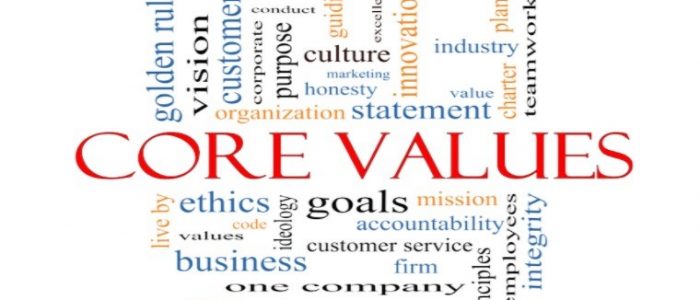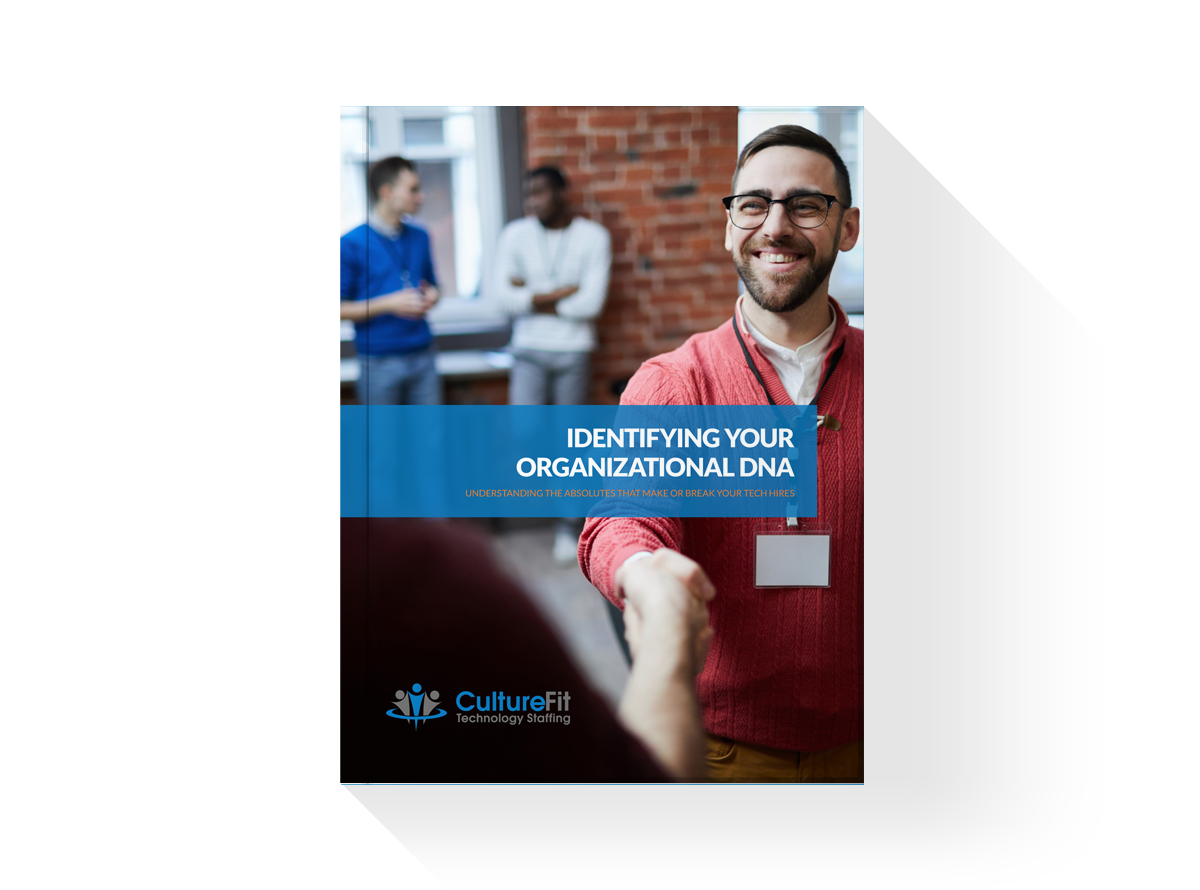Can Culture be Broken Down into Values?
21 Values that Can Help Define What Important to a Business and an Employee
A simple question with seemingly endless answers. The question has become so important, it’s basically launched its own industry inclusive of Books, Consultants, Research, Personality and Value Testing, Social Scientists, Conferences and Events dedicated to educating how to develop a business culture.
Google the term ‘business culture’ and you’ll find 819,000,000 results. It’s daunting for a concept that is still relatively new to modern business management; however, most leaders and dictionaries agree it comes down to a set of “values”. How to determine what values are relevant to a business, or prioritizing those values, or how to even define those values is where it becomes complex.
We did some digging to see if we could develop a list of values for businesses and talent to consider when defining their own culture. The following are the results of our research, along with qualitative observations we’ve made by working with hundreds of businesses throughout the country:
- Open line of communications – often referred to as an “open door” environment. There is no hierarchical requirement respective to who an employee should communicate with first. This type of organization will frequently build an office environment using cubicles vs. offices.
- Team is diverse – a team made up of a variety of cultural and racial backgrounds. The business strategy assumes that a diverse team will introduce more innovative ideas across a broad spectrum of cultural backgrounds.
- Continuous feedback – an organization that provides constant feedback to all employees based on performance and the needs of the organization
- Bonded by Love for the product – the employees are passionate for the products that are developed and sold by the company. The passion for the products or services is so strong team members are able to sell the value internally and externally.
- Naturally curious and innovative – this is an organization that encourages all employees to actively seek out new and better solutions from products to operations to customer support.
- Risk Takers – similar to an innovative environment, the team of risk takers are encouraged to use their instincts and best judgment at the moment a judgment is required. The assumption is that the risk(s) taken will have far more rewards than consequences.
- Multi-taskers – an organization that typically runs very lean in manpower. Team members are frequently called upon to run several projects at the same time, and often those projects can fall outside the normal scope of work.
- Hierarchical organization – typically the more traditional organization. The team is built in a pyramid structure with executives at the top, and subordinate layers below, such as directors, managers, assistant managers or front line customer support.
- Non-Hierarchical organization – in general, this type of company is often referred to as a “flat organization”. Employees are hired as equals with equal empowerment to make decisions. There’s several variations of this type of organization.
- High level of accountability – each team member is assigned a set of goals or responsibilities – generally, these come with a quantified method of measurement to determine successful performance.
- Adaptive – this type of expectation also tends to be pervasive in the smaller and lean organization. The business is in a continuous state of evolvement or change which requires the employees to adapt their roles and responsibilities to the changes that occur, as they occur.
- Challengers – employees are encouraged to challenge decisions that are made, as they are made. The philosophy of the company is by challenging decisions, the best decision will ultimately emerge.
- Growth through Continuous Education – the organization encourages, and sometimes requires, that core employees maintain a level of self-education. Through this effort, the business believes it’s able to stay ahead of competitive trends, operational efficiencies, or technical advantages to name only a few.
- Work vs. Life Balance – a company that values a good balance between an employee’s work schedule and family and/or friends. The expectation that this approach generates a higher level of productivity with fewer errors.
- Engineering driven – this is a company that grows and makes decisions based on the engineering team and product development vs. a marketing or customer service approach. Frequently, the engineering team is considered the highest rung of the organization.
- Customer driven – this company puts the customer at the center of everything they do, from operations through customer support. They make decisions based on what is best for the customer.
- Data-driven – this type of organization makes most of their decision based on collected data and information. There’s typically little subjectivity entered into their decisions with the idea that the data supports their decisions and thereby reduces the amount of risks incurred by the company. Information gathering and dissemination is a continuous process.
- Agile work environment – these types of companies don’t apply traditional “operational rules” such as 9am- 5pm work hours or expectations that all employees must work on premise. Typically, this is a very relaxed environment that believes they can operate and grow by giving employees the flexibility to work in the way that generates the greatest amount of individual productivity; however, although there’s a relaxed expectation around where and when employees should work, it shouldn’t be assumed this type of organization isn’t highly focused on growing the business.
- Team building through camaraderie – an environment that encourages internal socialization through frequent onsite and off-site social activities. This organization believes there’s strength and synergies that are generated through close internal friendships.
- Employees first – this organization will make many of their decisions based on the overall wellness to their employees. Frequently, these organizations will offer performance incentive programs, several health insurance options, and a laundry list of other benefits. The goal to this approach is to encourage employee retention – if the employee feels valued there will be less incentive to seek an alternative place of employment.
- Career focused – the emphasis is placed on creating a career development plan for every employee from the front line up to the executive management team. Plans are usually developed collaboratively with the employee based on their individual goals. The plans are routinely monitored to benchmark how the employees are progressing through their individual plan in order to grow their responsibilities and personal income. The business goal is to encourage employee retention, internal promotions, and operational continuity through knowledge retention.
No doubt there are many other values that could be added to the list. Value definitions may also vary from company to company, but the idea of having a clear understanding of what employees should expect prior to joining an organization helps to align expectations, reduce employee attrition, and move a company in a strategic direction that best serves the over all health of the organization.
Both employees and businesses will see long-term benefits by taking the time to outline what values are important, and then walk through the list annually as it’s a natural evolution for people and businesses alike to change over time.
What values would you add?
At CultureFit staffing we work with hundreds of companies and thousands of talented technology professionals to facilitate a process that reduces the risk of hiring a potential candidate that may have all of the skill sets, but may not compliment the values of the organization. As a result, our talent placements typically enjoy a much longer tenure.


